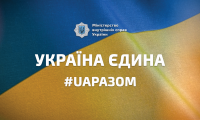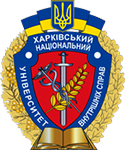Participation of a College Representative in the XIV International Festival of Innovative Projects ‘Sikorsky Challenge 2025’
From 28 October to 2 November 2025, the Igor Sikorsky Kyiv Polytechnic Institute hosted the XIV International Festival of Innovative Projects ‘Sikorsky Challenge 2025’, dedicated to issues of post-war development and reconstruction of Ukraine and ways to implement them.
The festival programme included not only a competition of innovative projects, but also other events such as the forum ‘Innovations in the Defence-Industrial Complex,’ the international forum ‘International Support for Ukraine’s Innovative Transformation,’ the forum of participants in the Sikorsky Challenge Ukraine innovation ecosystem ‘Innovative Development of Ukraine and Exhibition of Start-up Projects and Breakthrough Scientific and Technical Developments.’ The Sikorsky Challenge Immersive virtual exhibition also demonstrated its interactive capabilities for international partnerships. The festival programme concluded with the annual Global GreenChem Hackathon.
A total of 126 applications were submitted to the innovative projects’ competition from 24 cities in Ukraine, 71 higher education institutions and 9 enterprises in the following areas:
Section 1 ‘Aviation, Space, Defence and Security’;
Section 2 ‘Energy Sustainability and Security, Environmental Safety, Green Chemistry’;
Section 3 ‘Biomedical Engineering and Human Health’;
Section 4 ‘Digital Country, Industrial High Tech, Agrotech’;
Section 5 ‘Sikorsky Challenge Junior’.
It is pleasant to mention that a team of scientists from Igor Sikorsky Kyiv Polytechnic Institute, Yuri Kondratyuk Poltava Polytechnic National University, and Kremenchuk Flight College of Kharkiv National University of Internal Affairs, represented by Vadym Orel, Candidate of Technical Sciences, Associate Professor of the Air Transport Department, won with their project ‘Innovative means of identifying shrapnel in wounded patients’ in the section ‘Biomedical Engineering and Human Health’. This invention is particularly relevant in today's conditions and is designed to improve the accuracy of detecting and identifying shrapnel in a patient's wound using tactile probing.
During the research, an innovative tool for checking wound channels was developed – a compact and inexpensive device capable of quickly and effectively detecting fragments of various sizes made of corresponding materials.
The authors found that the controlled signals were functionally determined by the shape and type of foreign objects in them, with a probability of 75–80%. Thanks to this dependence, the device can be used to detect metal, wood, plastic, glass and bone (project readiness level TRL7 – the prototype has been tested in a working environment).
We congratulate Vadym Orel on this collective victory and wish him further success!





